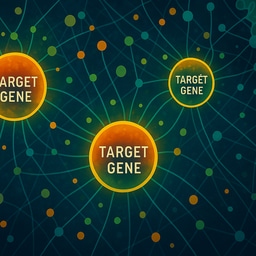The GLP-1 Megatrend (1 of 4): The Mechanistic Blind Spot No One Wants to Admit
Published in Biomedical Research

The rapid ascent of GLP-1–based therapies has created one of the most consequential shifts in modern medicine, reshaping clinical practice across obesity, diabetes, cardiometabolic disease, liver pathology, and even neurodegeneration. Yet beneath the extraordinary clinical results and the unprecedented commercial momentum lies a fundamental contradiction that the industry has largely avoided confronting: despite the breadth of physiological systems these agents appear to influence, we still lack a unified and reproducible mechanistic model capable of explaining their full biological scope.
This mechanistic ambiguity has been tolerated for years, partly because the clinical outcomes are so compelling, and partly because the field has never been forced to reconcile its disparate narratives. However, as GLP-1s expand into broader therapeutic categories, as new molecular analogues and combination regimens enter development pipelines, and as payers and regulators begin demanding evidence beyond empirical efficacy alone, this scientific blind spot is quietly becoming one of the most consequential constraints facing the entire sector.
A Multi-System Phenomenon Without a Multi-System Explanation
The defining paradox of GLP-1 pharmacology is not that we know too little about its biology, but rather that we know too much in isolated fragments, and almost none of it coherently interlocks into a reproducible cross-tissue model. GLP-1 agonists reduce appetite, modulate satiety circuits, alter hepatic lipid handling, improve endothelial function, attenuate inflammatory tone, influence microglial behavior, and appear to exert downstream neuroprotective effects, yet the field cannot convincingly articulate how these effects relate to one another, which are primary versus secondary, or which are merely correlative epiphenomena arising from broader systemic shifts.
This absence of a unified mechanistic architecture is not a trivial academic gap; it is the reason why so many clinically observable phenomena remain difficult to predict, stratify, or operationalize. We still do not understand why some patients lose 20–25% of their body weight while others lose far less despite similar dosing. We cannot explain why inflammatory biomarkers plunge in certain individuals yet remain stubbornly unchanged in others. We do not know why some patients experience disproportionate loss of lean mass, or why the cardiovascular benefits of GLP-1 therapy far exceed what weight reduction alone should account for. And perhaps most strikingly, we cannot explain why agents designed for metabolic disease consistently produce signals in neurodegenerative and psychiatric domains.
These patterns strongly suggest that GLP-1 biology is neither linear nor unidimensional, but instead reflects a complex, multi-system cascade that interacts with metabolic, immune, vascular, and neural circuitry in ways that traditional domain-siloed frameworks are structurally incapable of capturing.
Five Mechanistic Narratives – All Plausible, None Sufficient
Over the past decade, the field has converged around several mechanistic explanations, each compelling within its own intellectual boundary, yet none capable of integrating the full spectrum of biological effects observed in clinical practice.
The metabolic hypothesis – the earliest and still the most widely cited – attributes most downstream benefits to reduced caloric intake and improved insulin sensitivity. But this explanation quickly dissolves when faced with GLP-1–induced improvements in cardiovascular outcomes or inflammatory markers that occur even in patients with minimal weight loss.
The vascular-endothelial hypothesis posits improvements in endothelial function, nitric-oxide signaling, and microvascular perfusion, yet these vascular signatures vary dramatically between tissues and do not fully account for neuroprotective or immunomodulatory patterns.
The CNS-centric hypothesis highlights GLP-1 receptor activity within the hypothalamus and brainstem, linking appetite, reward, impulse control, and neuroinflammation; however, this framework does not explain the heterogeneity of hepatic or cardiometabolic responses.
Meanwhile, the immune and inflammation narrative, that GLP-1 analogues shift systemic inflammatory tone, remains attractive, but reproducibility has been limited; inflammatory trajectories diverge widely between patient groups, studies, and disease contexts.
Finally, the NLRP3 inflammasome hypothesis, which has gained considerable traction in the past two years, offers a promising bridge between metabolic inflammation and neurodegeneration. Yet the evidence remains fragmented, largely correlative, and highly variable across multi-omics datasets.
Each hypothesis captures a genuine facet of GLP-1 biology; none adequately reconcile the whole.
What we are seeing is a mosaic without a blueprint.
Why the Field Still Lacks Mechanistic Clarity
The inability to establish a reproducible mechanistic model does not reflect a deficit of data, intelligence, or investment; rather, it exposes a deeper structural issue embedded in the way biomedical research and pharmaceutical R&D are organized.
Academic disciplines and industrial teams remain divided by organ system (metabolism here, cardiology there, neuroscience somewhere else) while GLP-1 biology operates across all of them simultaneously. This fragmentation makes it nearly impossible to construct a cross-tissue causal model when each domain interprets the data through its own methodological and conceptual lens.
In addition, multi-omics datasets generated across trials, biobanks, and real-world studies lack harmonization. Sequencing protocols differ, analytical pipelines diverge, and statistical thresholds vary widely, creating an ecosystem where two studies examining similar biological questions cannot be reconciled with confidence.
Compounding this is a persistent overreliance on linear, single-omic mechanistic theories in a disorder space that is inherently multi-modal. GLP-1 agonists alter transcriptional, proteomic, metabolic, immunologic, and neural dynamics in ways that cannot be captured by isolated measurements or siloed analytics.
This is why so many mechanistic claims collapse the moment they are tested against independent datasets. The underlying analytical infrastructure is simply not designed to consolidate, reproduce, or validate biology at the scale GLP-1 therapeutics demand.
Mechanistic Reproducibility Is Now the Industry’s Most Valuable Missing Capability
As GLP-1 programs expand into cardiovascular prevention, hepatic disease, neurodegeneration, addictive disorders, and combination therapies with NLRP3 inhibitors, SGLT2 inhibitors, amylin analogues, and emerging metabolic assets, the cost of mechanistic uncertainty will escalate dramatically.
Without reproducibility, biomarker discovery becomes inconclusive, next-generation targets remain speculative, payer stratification is impossible to justify, and the enormous biological heterogeneity of responders versus non-responders remains unresolvable.
In other words, the absence of mechanistic clarity is the quiet choke-point underlying every major scientific, clinical, and commercial decision in the GLP-1 ecosystem.
A reproducibility-first framework – rooted in multi-omics integration, cross-tissue causal mapping, and longitudinal mechanistic validation – is no longer a scientific luxury; it is the foundational requirement for the next chapter of GLP-1 innovation.
How This Blind Spot Leads Directly Into the Next Crisis
If we cannot explain how GLP-1 agonists exert their multi-system effects, then we cannot reliably determine who benefits from them, why certain responses emerge, or which biological signatures distinguish durable responders from partial responders, early plateauers, non-responders, or individuals at risk for muscle loss, inflammatory rebound, or neuroprotective divergence.
That brings us to the second and arguably most urgent issue facing the field: the complete absence of validated biomarkers for patient selection, durability prediction, inflammation trajectories, neuroprotective potential, or combination-therapy optimization.
This biomarker vacuum sits directly downstream of the mechanistic vacuum.
And it will be the subject of the next article in this series:
The GLP-1 Megatrend (2 of 4): The Biomarker Void That Will Break the Current Model.


Please sign in or register for FREE
If you are a registered user on Research Communities by Springer Nature, please sign in